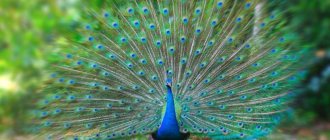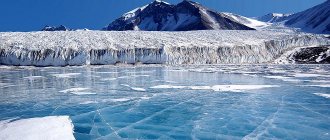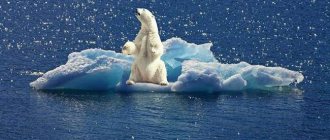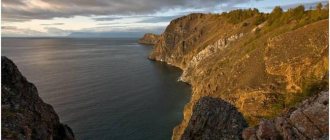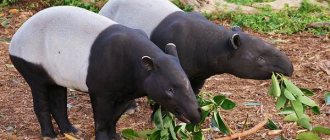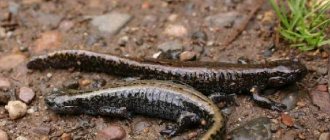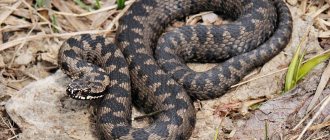This is not the first article about the fastest animals on the planet. We have previously written about the fastest animals living on land and the fastest birds cutting through the air. The main thing that was emphasized was the speed due to which animals turn into successful “hunters”, but also many of them get a chance to escape from these same “hunters”.
Blue or blue shark (lat. Prionace glauca). flickr/gerwaz
The special structure of the skeleton and the strength of the limbs make many animals the fastest land creatures, and in principle this also applies to feathered friends, who, in addition to everything listed above, also skillfully use air currents. But what about the inhabitants of the water spaces? What does the title of “fastest animal” living in the ocean, sea or fresh water allow them to learn?
Sailfish
Sailfish (lat. Istiophorus platypterus). flickr/andre.callewaert
The sailfish (lat. Istiophorus platypterus) is the fastest fish in the world. An inhabitant of tropical and subtropical seas and oceans, it is also found in the Black Sea, where it comes from the Indian Ocean. This fish was included in the Guinness Book of Records due to its unique structure (characteristic dorsal fin) and the enormous speed that the sailboat can reach up to 100-109 km/h. The speed of the sailfish was proven in tests conducted in Florida (USA). The length of the sailboat can be up to 3.5 m, weight - 100 kg.
Shallow water plants of fresh water
Common calamus (Acorus calamus)
Three-leaf watch (Menyanthes trifoliata)
Swamp iris (Iris pseudacorus)
Marsh marigold (Caltha palustris)
Forget-me-not (Myosotis palustris)
Pontederia cordata
Cattail (Typha latifolia)
Juncus effusus
Common arrowhead (Sagittaria sagittifolia)
Umbrella squirrel (Butomus umbrellatus)
Southern reed (Phragmites australis)
Common ponytail (Hippuris vulgaris)
Water buttercup (Ranunculus aquatilis)
Swamp butterfly (Hottonia palustris)
Spica urut (Myriophyllum spicatu m)
Azolla
Wolfia
Atlantic blue marlin
Atlantic blue marlin (lat. Makaira nigricans). flickr/worldwildlifegeographic
Atlantic blue marlin (lat. Makaira nigricans) belongs to the sailfish family. Although they do not have such a huge dorsal fin as sailboats, they are almost as fast as sailboats. This fish grows up to 4-5 m, weighs about 800 kg, but it can easily outrun many types of sharks, and other inhabitants too. Capable of reaching speeds of up to 85 km/h. It should be noted that images of marlin are on the coats of arms of the Bahamas and Seychelles; it was also this fish that the hero of Ernest Hemingway’s work “The Old Man and the Sea” hunted.
Ground-air habitat
It includes air and ground parts and is excellent for the reproduction and development of living beings. This is a rather complex and diverse environment, which is characterized by a high degree of organization of all living things. Soil exposure to erosion and pollution leads to a decrease in the number of living beings. In the terrestrial world, organisms have a fairly well developed external and internal skeleton. This happened because the density of the atmosphere is much less than the density of water. One of the significant conditions for existence is the quality and structure of air masses. They are in continuous motion, so the air temperature can change quite quickly. Living things that live in this environment must adapt to its conditions, so they have developed an adaptation to sudden temperature fluctuations.
The air-terrestrial habitat is more diverse than the aquatic one. Pressure drops are not so pronounced here, but a lack of moisture occurs quite often. For this reason, terrestrial living creatures have mechanisms that help them with the supply of water to the body, mainly in arid areas. Plants develop a strong root system and a special waterproof layer on the surface of the stems and leaves. Animals have an exceptional structure of external integument. Their lifestyle helps maintain water balance. An example would be migration to watering holes. The composition of the air also plays an important role for terrestrial living beings, providing the chemical structure of life. The raw material source for photosynthesis is carbon dioxide. Nitrogen is required to connect nucleic acids and proteins.
Atlantic mackerel
Atlantic mackerel (lat. Scomber scombrus). flickr/Chris_AJ
Not everyone knows the fact that one of the most popular commercial fish, namely the Atlantic mackerel (lat. Scomber scombrus) is capable of developing incredible speeds - 75-80 km/h! It is at this speed that mackerel can swim during spawning or when making a cast. Mackerel is an inhabitant of warm seas: Mediterranean, Marmara and Black. During summer migrations it swims into the Baltic, White, North and Barents Seas. It feeds on zooplankton and small fish.
Adaptation to the environment
The adaptation of organisms to their environment depends on their place of residence. Flying species have developed a certain body shape, namely:
- light limbs;
- lightweight design;
- streamlining;
- presence of wings for flight.
In climbing animals:
- long grasping limbs, as well as a tail;
- thin long body;
- strong muscles that allow you to pull up your torso and throw it from branch to branch;
- sharp talons;
- powerful grasping fingers.
Running living creatures have the following features:
- strong limbs with low mass;
- reduced number of protective horny hooves on the toes;
- strong hind legs and short forelimbs.
In some species of organisms, special adaptations allow them to combine the characteristics of flight and climbing. For example, having climbed a tree, they are capable of long jumps and flights. Other types of living organisms can run fast and also fly.
Atlantic bluefin tuna
Atlantic bluefin tuna (lat. Thunnus thynnus). flickr/ViSta-se
Atlantic bluefin tuna (lat. Thunnus thynnus) is a species on the verge of extinction. According to the latest data, its number is about 6-7%. It is also one of the fastest fish on the planet. Tuna can swim at speeds of up to 75 km/h. Bluefin tuna is a warm-blooded fish that lives in the Barents Sea and the waters of Greenland, as well as in the warmer waters of the Gulf of Mexico and the Indian Ocean. It grows to impressive sizes: more than 4 meters in length and weighing more than 500 kilograms.
Crustaceans
The group includes crabs, crayfish, lobsters, shrimp, and krill. Lobsters and krill are inhabitants of the oceans, crabs and shrimp can live in salt and fresh water, crayfish prefer fresh water.
Characteristic features of crustaceans are gill breathing and an exoskeleton made of chitin, which changes as the animal grows.
Neva crayfish “work” at wastewater treatment plants in St. Petersburg. They control the purity of the water. A sensor is attached to the crayfish's back to monitor its heart rate. When dirty water comes in, the controller's heart beats twice as fast.
Rice. 1. Nevsky crayfish at wastewater treatment plants, St. Petersburg.
Yellowfin tuna
Yellowfin tuna (lat. Thunnus albacares).
Yellowfin tuna (lat. Thunnus albacares) is slightly inferior to its relative, both in size and speed. Its length can be about 2-2.5 m, weight - 200 kg. This large fish can reach speeds of up to 70 km/h. The yellowfin tuna got its name from its bright yellow fins (dorsal and anal), as well as from the longitudinal white-yellow stripes on its body.
Deep sea fauna
There are a great many inhabitants of the seabed, but their sizes are microscopic. These are mainly the simplest unicellular organisms, coelenterates, worms, crustaceans and mollusks. However, in deep water there are also fish and jellyfish that develop the ability to glow. Therefore, we can say that there is not absolute darkness under the water column. The fish that live there are predatory and use light to attract prey. One of the most unusual and terrifying, at first glance, is the hauliod. This is a small black fish with a long whisker on the lower lip, with the help of which it moves, and with terrible long teeth.
Shellfish
One of the most recognizable representatives of the mollusk order is the squid. It lives in both warm and cold seas. The colder the water, the paler the color of the squid. The change in color saturation also depends on the electrical impulse. Some individuals have three hearts, so they have the ability to regenerate. Squids are predators; they feed on small crustaceans and plankton.
Shellfish also include oysters, mussels, and scallops. These representatives have a soft body, closed in a shell of two valves. They practically do not move, bury themselves in silt or live in large colonies, located on rocks and underwater reefs.
Blue or blue shark
Blue or blue shark (lat. Prionace glauca). flickr/welikesharks
The blue or blue shark (lat. Prionace glauca), also known as mokoi, is the most common shark in the world. This is a fairly large shark; its body length can reach 4 meters and weigh about 200 kg. The speed that this predator can reach is about 65-68 km/h. The blue shark feeds on cephalopods, bony fish, crustaceans and even small sharks, whales and seabirds.
Adaptations for soil habitats
For a comfortable existence, organisms have special body parts:
- small digging limbs;
- long and thin body;
- digging teeth;
- streamlined body without protruding parts.
The soil may lack air and be dense and heavy, which in turn has led to the following anatomical and physiological adaptations:
- strong muscles and bones;
- resistance to oxygen deficiency.
The body coverings of underground organisms must allow them to move both forward and backward in dense soil without problems, so the following characteristics have evolved:
- short wool, resistant to abrasion and able to be ironed back and forth;
- lack of hair;
- special secretions that allow the body to slide.
Specific sense organs have developed:
- the ears are small or completely absent;
- there are no eyes or they are significantly reduced;
- tactile sensitivity has become highly developed.
It is difficult to imagine vegetation without soil. A distinctive feature of the soil habitat of living organisms is that the creatures are associated with its substrate. One of the significant differences in this environment is the regular formation of organic matter, usually due to dying plant roots and falling leaves, and this serves as a source of energy for the organisms growing in it. The pressure on land resources and environmental pollution negatively affect the organisms living here. Some species are on the verge of extinction.
Atlantic tarpon
Atlantic tarpon (lat. Megalops atlanticus). flickr/Notini
Atlantic tarpon (lat. Megalops atlanticus) is a large fish that resembles a herring, but tarpon has nothing in common with it. Tarpon is not a commercial fish, but their meat is used for food. They catch tarpon using a line, as this fish is found in shallow waters and off the coast. The maximum speed at which tarpon can swim is 56 km/h. When tarpon lack oxygen, they quickly jump out of the water to get air.
How animals breathe with gills
The gills consist of leaflets (threads), inside them there is a network of blood vessels. The blood in them is separated from the external environment by a very thin skin, and the necessary conditions are created for the exchange between gases dissolved in water and the blood. The gill slits in fish are divided by arches, from which branchial septa extend. In some bony and cartilaginous species, the petals of the gills are located on the outer side of the arches in two rows. Actively swimming fish have gills with a much larger surface area than sedentary aquatic animals.
In many invertebrates and young tadpoles, these respiratory organs are located on the outside of the body. In fish and higher crustaceans they are hidden under protective devices. Often the gills are located in special body cavities; they can be covered with special folds of skin or leathery covers (gill operculum) to protect them from damage.
The gills also function as a circulatory system.
The movement of the gill cover during breathing occurs simultaneously with the movement (opening and closing) of the mouth. When breathing, the fish opens its mouth, draws water in, and closes its mouth. Water affects the respiratory organs, passes through them and comes out. Oxygen is absorbed by the capillaries of the blood vessels located in the gills, and the used carbon dioxide is released through them into the water.
This is interesting: Arthropods - characteristics, description, types, classification and photos
killer whale
Killer whale (lat. Orcinus orca). flickr/Kingdom Animalia
The killer whale (lat. Orcinus orca) is one of the largest mammals living in the World Ocean. It is capable of reaching speeds of up to 55 km/h. She needs this speed to hunt various sea animals. Speed and intelligence make the killer whale a formidable and dangerous predator.
Adaptations for the life of aquatic organisms
Different habitats for animals allow them to adapt and exist comfortably. The body of organisms is able to reduce friction with water due to the characteristics of the cover:
- hard, smooth surface;
- the presence of a soft layer present on the outer surface of the hard body;
- slime.
Limbs represented:
- flippers;
- membranes for swimming;
- fins.
The shape of the body is streamlined and has a variety of variations:
- flattened in the dorso-abdominal region;
- round in cross section;
- laterally flattened;
- torpedo-shaped;
- teardrop-shaped.
In an aquatic habitat, living organisms need to breathe, so they developed:
- gills;
- air intakes;
- breathing tubes;
- bubbles that replace the lung.
Tiger shark
Tiger shark (lat. Galeocerdo cuvier). flickr/bdkulick
The tiger shark (lat. Galeocerdo cuvier) is a predatory fish with a large mouth and sharp beveled teeth. Thanks to this structure of the teeth, the shark easily deals with the turtle shell. The speed of sea turtles does not exceed 35 km/h, and the tiger shark can reach speeds of up to 55 km/h. At this speed, catching up with the turtle is not difficult. Then why does she need such high speed? Probably in order to avoid becoming a victim of a larger predator herself.
As we see, in the waters of the World Ocean, speed is simply necessary both for the predator and for the one who wants to get away from the predator. Everything in this world is relative: today you hunt, and tomorrow they will hunt you.
Unusual octopus
A distinctive feature of the octopus is the absence of a solid skeleton; the body of the underwater inhabitant bends in different directions . The name of this species comes from the structure of its body, from which eight tentacles extend. They have suction cups arranged in two rows. With their help, the underwater inhabitant is attached to the stones and holds prey.
Octopuses live at the bottom in crevices and caves hidden by the pool. If necessary and in case of danger, they are capable of changing color, merging with the ground. Only the horny jaws, which outwardly resemble a beak, are hard. Octopuses are predators that are active and overtake prey at night. They not only swim, but also move along the bottom.
The octopus' prey includes lobsters, shrimp, fish and crabs. It infects them with poison produced by the salivary glands. Its working beak is so strong that it can easily handle mollusk shells and arthropod shells. Research shows that octopuses pull prey into deep shelter and feast on it there. Some individuals are so poisonous that they can kill humans.
2. As you know, about 70% of the Earth's surface is covered with water. About 1.3 billion cubic kilometers of water on the planet in seas, rivers and oceans are still poorly understood on Earth, as are the creatures that live in them.
3. Without plankton, the entire world of marine life would cease to exist. Plankton are microscopic creatures that are invisible to the naked eye. Their design does not allow them to move arbitrarily in the water. The position of this creature depends on the current, they are not able to resist it.
4. In nature, there are two types of plankton: zooplankton, which is formed from living organisms; and phytoplankton are special marine plants. They give the water a slightly green tint.
PLANKTON
5. There is so much plankton in water that in one liter of it millions of these creatures are found. Moreover, they not only serve as food that all marine life eats, but also participate in the restoration of oxygen in the water.
6. Jellyfish appeared on Earth so long ago that their distant ancestors witnessed the life of dinosaurs. The range of sizes of these creatures of different species is striking. The smallest of them are the size of a pinhead, while the largest have a dome with a diameter of two and a half meters, and their tentacles grow up to fifty meters.
JELLYFISH
7. The breathing of a jellyfish is very different from the breathing of a person or even a fish. The jellyfish does not have lungs or gills, or indeed any other respiratory organ. The walls of its gelatinous body and tentacles are so thin that oxygen molecules freely penetrate through the jelly-like “skin” straight into the internal organs. Thus, the jellyfish breathes over the entire surface of its body.
8. Since jellyfish mostly die after reproduction, their life span is very short. Very rare specimens live in nature for more than two years. Most often they are given only a few months. In captivity, these marine inhabitants can live for quite a long time.
STARFISH
9. A species of starfish called Lunckia columbiae can reproduce its entire body from a 1-centimeter-long particle.
10. Most species of cetaceans prefer sea spaces. The exception is the humpback whale, which lives near the coast. There are cases when these animals were spotted in bays and rivers. These sea creatures love to perform acrobatic stunts. They emerge from the water and dance gracefully.
OCTOPUS SWIM
11. Sea giants - octopuses are very interesting for their unusual structure. After all, octopuses have tentacles instead of legs, and they have no bones at all. Thanks to the latter fact, this creature can easily squeeze into a tiny hole, the diameter of which is only one centimeter.
12. Corals are formed from small animals. Although many believe that these are marine plants. Coral reefs are home to many animals and plants. This is due to the calm sea inside them. In addition, they have a lot of light and warmth. The inside of the reef is teeming with life, while the outside is empty and bottomless.
13. The largest coral has a length of more than two thousand kilometers. It is located off the coast of Australia. Underwater volcanoes sometimes rise to the surface of the ocean. Regularly shaped coral reefs can form around such craters. They form coral islands called atolls.
14. Most sharks repel predators simply because they are sharks. However, there are still predators that hunt sharks. And the smaller the shark species, the more enemies it has. The California bloat shark is one of the smallest shark breeds. It grows to about 1 meter in length and is about the size of a small Doberman Pinscher.
15. These sharks feed on bottom-dwelling creatures, preferring to ambush crabs and unsuspecting cuttlefish rather than risky pursuit of ordinary fish. An adventurous day means stealing lobsters from fishermen's traps. And on defense, the California bloat shark is a master of camouflage: when threatened, it sucks water into pouches around its belly and doubles in size.
KEITH NARWAL
16. Despite its terrifying appearance - a long straight horn - the narwhal is a rather good-natured creature that lives in the waters of the Arctic.
17. Interesting facts about sea creatures - octopuses: the blood of these creatures is blue; they have three hearts; octopuses are deaf; they can separate any part of the body, which then grows back; octopuses easily change their color to adapt to their environment; they turn completely white with fear; in order to confuse the pursuer, these animals throw out a cloud of ink.
18. Male crabs have one claw that is significantly larger than the other. These crabs got their name because they seem to call females to them by moving this claw. Males of one of the species of lure crab Uca mjobergi went further - if they lose a large claw in a fight with another male, then they grow it even larger, although much weaker. However, for females its appearance becomes more significant, and other males are afraid to engage in battle with the owner of such a claw.
19. Unusual sea predators - stingrays. Their bodies are strongly flattened and resemble a scarf. When the stingray lies on the bottom, it is perfectly camouflaged. His swimming style resembles flying in the water column. Some species of stingrays are poisonous. They have a spike on their back that releases a poisonous substance. And their mouth is on their belly. Moreover, it is equipped with a large number of sharp teeth.
20. Lobsters really feel pain when they are thrown into boiling water. However, by immersing them in salt water before cooking, you can numb them.
CANCER-MANTIS
21. Mantis crayfish live in tropical and subtropical seas. They have the most complex eyes in the whole world. If people can distinguish three primary colors, then these creatures can distinguish as many as twelve. They also see infrared and ultraviolet rays.
22. The short-snouted pipistrelle fish has a very unusual appearance. It's all about the bright red lips on the body. Previously, scientists believed that such a part attracted other sea inhabitants. But later it turned out that this function is performed by the esca, a formation on the head that emits a specific odor. It attracts crustaceans, fish and worms.
23. For centuries, scientists, starting with the Greek philosopher Aristotle, have tried to understand how eels reproduce. Today they are known to lay eggs in the Sargasso Sea, between Bermuda and the Caribbean islands. Small larvae travel many thousands of kilometers to return to the rivers where their parents come from.
24. Marine predators such as sperm whales feed on cephalopods and fish. They are wonderful divers. They can dive for squid to depths of up to two kilometers. While searching for prey, sperm whales are capable of not breathing for about two hours.
25. Heikegani crabs live off the coast of Japan, the pattern on their shells resembles the face of an angry samurai. According to science popularizer Carl Sagan, this species owes its appearance to unintentional artificial selection. Many generations of Japanese fishermen, catching such crabs, released them back into the sea, as they considered them to be reincarnations of samurai killed in battle. By doing this, the fishermen increased the heikegani's chances of reproducing and increasing their numbers among other crabs.
GIANT SQUID
26. The giant Antarctic squid was recently a legend and fiction, until the largest mollusk was found in 2007. It was caught by fishermen from New Zealand off the coast of Antarctica. The squid was 10 meters long and weighed almost half a ton. After studying the mollusk, scientists discovered an incredible fact: its digestive system passed through the brain.
27. The names of sea creatures such as sunfish, needle fish, flounder and swordfish sound amazing. The first of them floats near the surface of the sea. This makes its fin visible above the water. From a distance it looks like a shark fin. However, it is completely harmless.
28. The needlefish hunts in a completely unique way: it approaches the prey, often hiding behind other fish, and sucks it into its long “beak” with lightning speed. In terms of its characteristics, the needle fish is very similar to the seahorse.
29. Balyanus or barnacle is also called sea tulip or acorn. At birth it looks like a water flea. As a result of initial development, he grows 14 legs and 3 eyes, and after that - 24 legs, and the eyes disappear. These creatures live by attaching themselves to solid objects.
30. When abalones feed on red algae, their shell turns red. A 10 cm long abalone can hold onto a rock so tightly that two strong people cannot tear it off.
CRAB-YETI
31. In 2005, during an expedition in the Pacific Ocean, scientists discovered crabs whose bodies were covered with fur. Because of their unusual appearance, they were nicknamed “Yeti crabs.”
32. Sea worms mate as follows: during the mating season, females and males gather in a swarm. Suddenly, the females pounce on the males and bite off their tails. The tails contain sperm. When swallowed, it moves through the digestive tract and fertilizes the female's eggs.
33. A new species of large squid was discovered by scientists in the Indian Ocean in 2009. Representatives of this species reach a length of 70 centimeters. They belong to the Chiroteuthid family, deep-sea squids with a long, narrow body.
34. Flounders can only have eyes on the right or left side of the body. It all depends on the species. These marine fish are unique in that their eggs do not contain fat. This causes the eggs of most flounder species to float near the surface. These fish do not like deep water. They live mainly near the coast. Rare individuals swim to depths of more than one kilometer.
35.It is interesting that flounder species are distinguished by mouth size. They can be largemouth or smallmouth. The first of them are predators, whose mouth is symmetrical and “equipped” with teeth on the sighted and blind sides of the body. Examples of such fish are halibut and flounder. They feed mainly on worms and small fish, mollusks and crustaceans, as well as brittle stars.
SEA SWORDFISH
36. Saltwater swordfish is the fastest fish, capable of reaching speeds of up to 130 kilometers per hour. For such speeds you need space. Therefore, it can only be found in the open ocean.
37. Monkfish came up with his own style of hunting. This predator shakes its antenna with a growth that resembles a worm in appearance. The fish “bite” at him, and he eats them.
38. Farmers in the Caribbean use the venom of a certain type of jellyfish as a poison for rats.
39. The leopard seal is a formidable and dangerous predator. This seal got its name because of its color, similar to the spots of a leopard. It feeds on penguins and other warm-blooded animals of the Antarctic. But the leopard seal does not mind picking up carrion or feasting on squid or fish.
40. The starfish is the only animal that can turn its stomach inside out. When it approaches its prey (usually representatives of mollusks), the star sticks its stomach out through its mouth and covers the victim’s shell with it. Then slowly digests the fleshy parts of the shellfish outside of its body
. FISH BLACK SHAMMER
41. The Black Crookshank is a fish that can swallow food weighing twice its own weight.
42. Swordfish fry feed on plankton. But after they grow to 2 cm, they begin to hunt. Their prey is small fish. At the same time, they begin to develop a sword-shaped appendage. The fry grow very quickly, and after a year their length is about 50 centimeters. The predator feeds on everything that comes in its way. And the size of the prey doesn't matter. With her sword she strikes the sea dweller. There are known facts that pieces of shark bodies were found in the stomachs of caught fish.
43. The most famous sea predators are sharks. They were able to survive the dinosaurs. Their sizes depend on the species. The largest of them reach 10-12 meters. Moreover, not all types of sharks are predators. There are some that feed on plankton. Sharks move very quickly due to their streamlined body shape. Unlike fish, they lay eggs, not eggs. These eggs may be attached to the bottom or algae.
44.And some species of sharks carry eggs inside themselves. Shark eggs hatch completely viable. Prominent representatives of this family: tiger and gray sharks. The first one is painted in a very original way. So much so that it resembles a tiger. She doesn't swim far from the coastline. Its diet consists of fish and crustaceans, birds and small mammals.
45. The gray shark also does not swim far into the sea. She looks for fish and crustaceans in the shallows. It does not purposefully attack people. But a person running in panic can be mistaken for a victim.
FLYING FISH
46. The flying fish invented a way to escape from enemies. She learned to glide over the sea. This is facilitated by its well-developed lateral fins.
47. Another predatory marine mammal is the killer whale. She has proven herself to be a brutal killer. But there are no documented facts about attacks on people.
48. Warlike swordfish. This name arose due to the unusual xiphoid process, which is located on its upper jaw. This is not the only feature. Swordfish have no scales. All this, as well as a sickle-shaped tail and a special shape of fins, allows it to be the fastest creature on Earth.
49. Blue whales are already born giants. Their length reaches 8 meters, and they weigh about 3 tons. The largest female of this whale that was caught weighed 190 tons.
50. Some types of octopuses are extremely poisonous. For example, the blue-ringed one, which has a diameter of about 3-4 centimeters and weighs only 100 grams. Its bite stops swallowing after 5 minutes. And after 30 minutes the person suffocates. Moreover, there is no effective antidote yet. The only way to save a person is to perform artificial ventilation until the poison stops working.
photo from the Internet
Top 10 most beautiful inhabitants of the oceans and seas
- The Atoll Jellyfish is the most beautiful of the jellyfish.
- Blue Angel Clam is a delicate color.
- The sponge harp is an amazing shape.
- Dumbo the octopus has a charming appearance.
- Sea slug - beauty of shapes and shades.
- Leafy sea dragon - feathered fins.
- The ribbon moray eel is a graceful ocean dweller.
- Tangerine fish - bright colors.
- The Banggai Cardinalfish is an unusual form.
- Green sea turtle - amazing photos.
